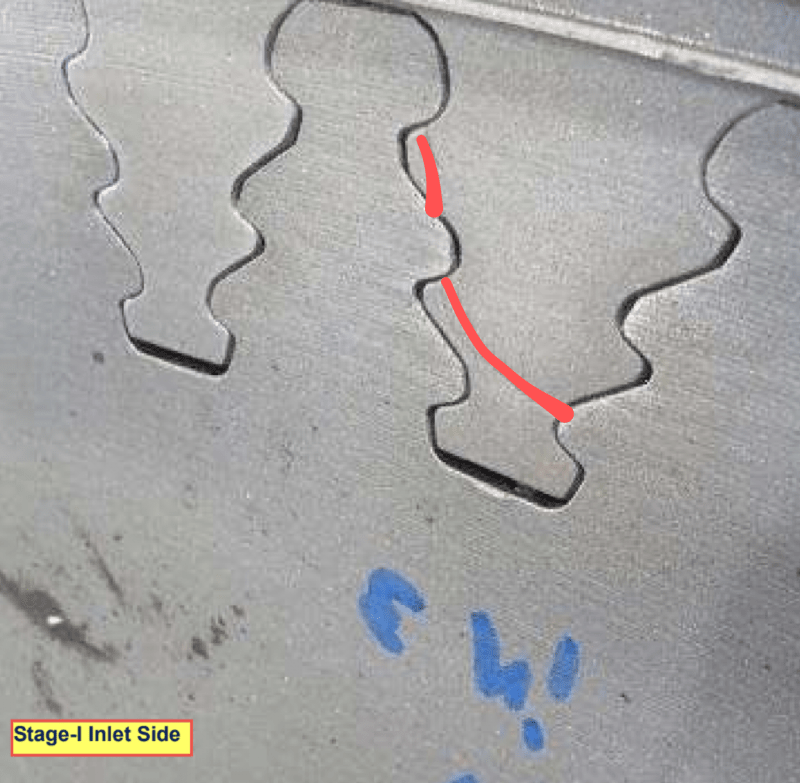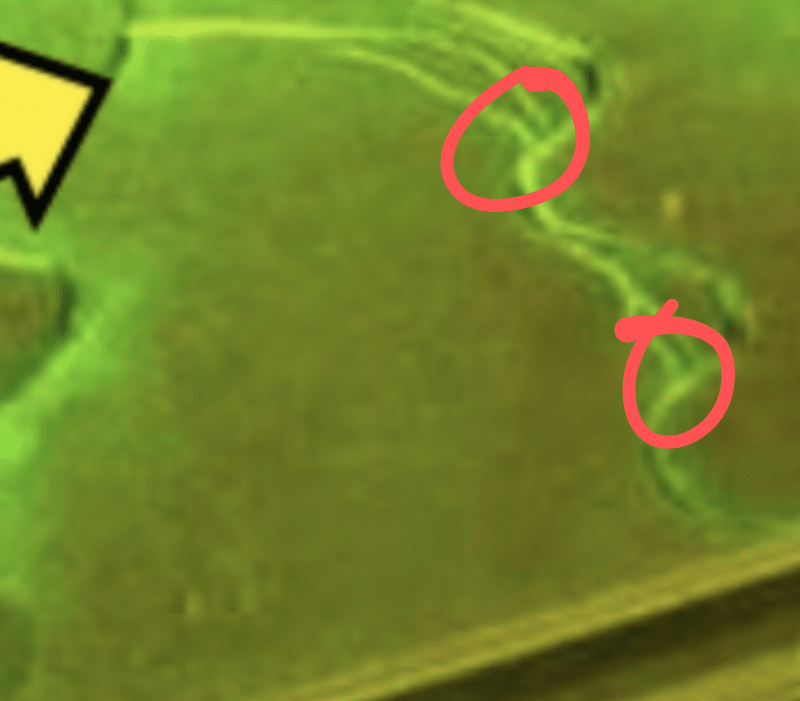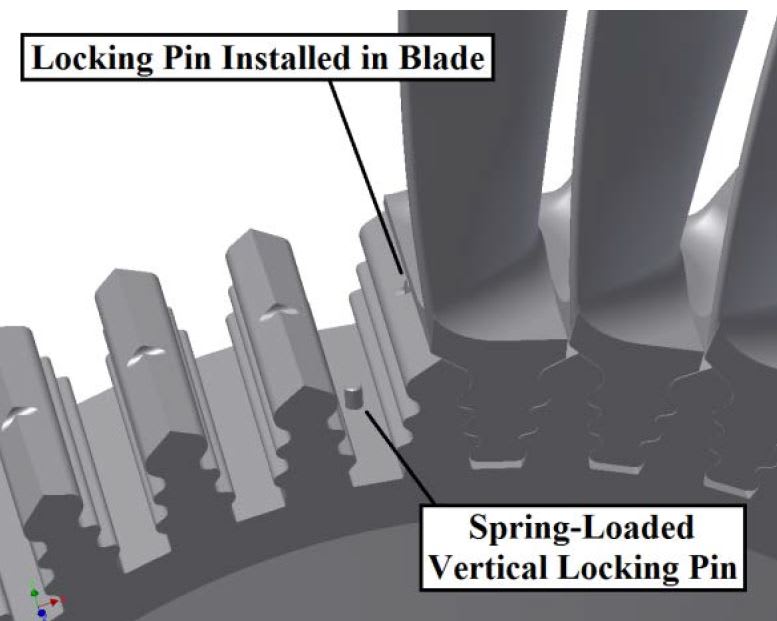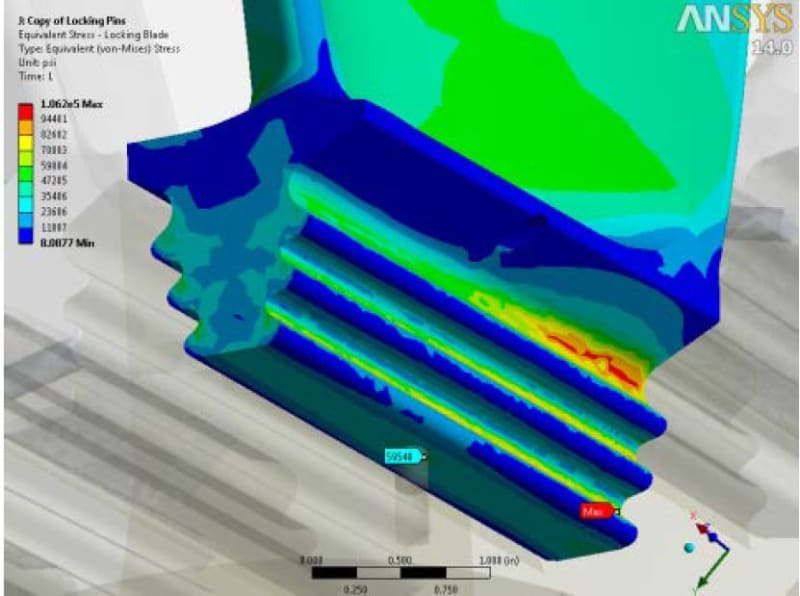Dear All
Recently during planned outage of a Steam Turbine, we have observed cracks on the Roots of some Blades in 1st Wheel. The Blade Roots are dovetail design. Turbine is Multi Stage (08 Stages) Extraction/Condensing Impulse Turbine (Rateau Turbine.) Live Steam conditions are 61 barg & 430 Deg Celsius. Extraction is at 10 barg after 3rd Stage
After evaluation of the operating parameters, OEM has attributed the cracks to some events of sudden/sharp Temperature drop measured upstream of TTV. As per OEM rate of Temperature change exceeding 4 Deg Celsius/minute can cause cracks in Blade Dovetail Slots.OEM has asked us to maintain Rate of Temperature drop within 4 Deg Celsius/minute measured at TTV Inlet. I am not understanding the OEM's responde due to following
[ul]
[li]In my understanding Turbine 1st Wheel Blades are exposed to Steam exiting 1st Nozzle. So 1st Wheel Blades are exposed to After 1st Nozzle Pressure and Temperature. As its impulse Stage almost entire 1st stage Pressure Drop (61 barg to 30 barg) will be across 1st Nozzle. For a given change in Inlet Temperature the change in 1st Nozzle Exhaust Temperature will be less (constant Pressure Lines diverge from left to right on Temp. Entropy Diagram). Based on above in my opinion measuring after 1st Stage Temperature will more accurately reflect the Temperature Changes experienced by 1st Stage Blades.[/li]
[li][/li]
[li]In my understanding during Load Changes, Temperature downstream of Governor Valves will vary due to throttling of Governor Valve. OEM has given Extraction & Exhaust Temperature Vs Inlet Steam Flow curves indicating Extraction Temperature change (drop) of 20 deg Celsius as inlet Steam Flow varies from 140 to 160 Ton/Hr (Curve is non linear and tends to flatten as Stem Flow increases). In my understanding there will be similar changes in Temperature of Steam entering 1st Wheel. (Extraction is after 3rd Stage & Extraction Pressure is app. 10 barg.)[/li]
Based on above I am totally confused by OEMs reply. May be I am missing something ?
Recently during planned outage of a Steam Turbine, we have observed cracks on the Roots of some Blades in 1st Wheel. The Blade Roots are dovetail design. Turbine is Multi Stage (08 Stages) Extraction/Condensing Impulse Turbine (Rateau Turbine.) Live Steam conditions are 61 barg & 430 Deg Celsius. Extraction is at 10 barg after 3rd Stage
After evaluation of the operating parameters, OEM has attributed the cracks to some events of sudden/sharp Temperature drop measured upstream of TTV. As per OEM rate of Temperature change exceeding 4 Deg Celsius/minute can cause cracks in Blade Dovetail Slots.OEM has asked us to maintain Rate of Temperature drop within 4 Deg Celsius/minute measured at TTV Inlet. I am not understanding the OEM's responde due to following
[ul]
[li]In my understanding Turbine 1st Wheel Blades are exposed to Steam exiting 1st Nozzle. So 1st Wheel Blades are exposed to After 1st Nozzle Pressure and Temperature. As its impulse Stage almost entire 1st stage Pressure Drop (61 barg to 30 barg) will be across 1st Nozzle. For a given change in Inlet Temperature the change in 1st Nozzle Exhaust Temperature will be less (constant Pressure Lines diverge from left to right on Temp. Entropy Diagram). Based on above in my opinion measuring after 1st Stage Temperature will more accurately reflect the Temperature Changes experienced by 1st Stage Blades.[/li]
[li][/li]
[li]In my understanding during Load Changes, Temperature downstream of Governor Valves will vary due to throttling of Governor Valve. OEM has given Extraction & Exhaust Temperature Vs Inlet Steam Flow curves indicating Extraction Temperature change (drop) of 20 deg Celsius as inlet Steam Flow varies from 140 to 160 Ton/Hr (Curve is non linear and tends to flatten as Stem Flow increases). In my understanding there will be similar changes in Temperature of Steam entering 1st Wheel. (Extraction is after 3rd Stage & Extraction Pressure is app. 10 barg.)[/li]
Based on above I am totally confused by OEMs reply. May be I am missing something ?




